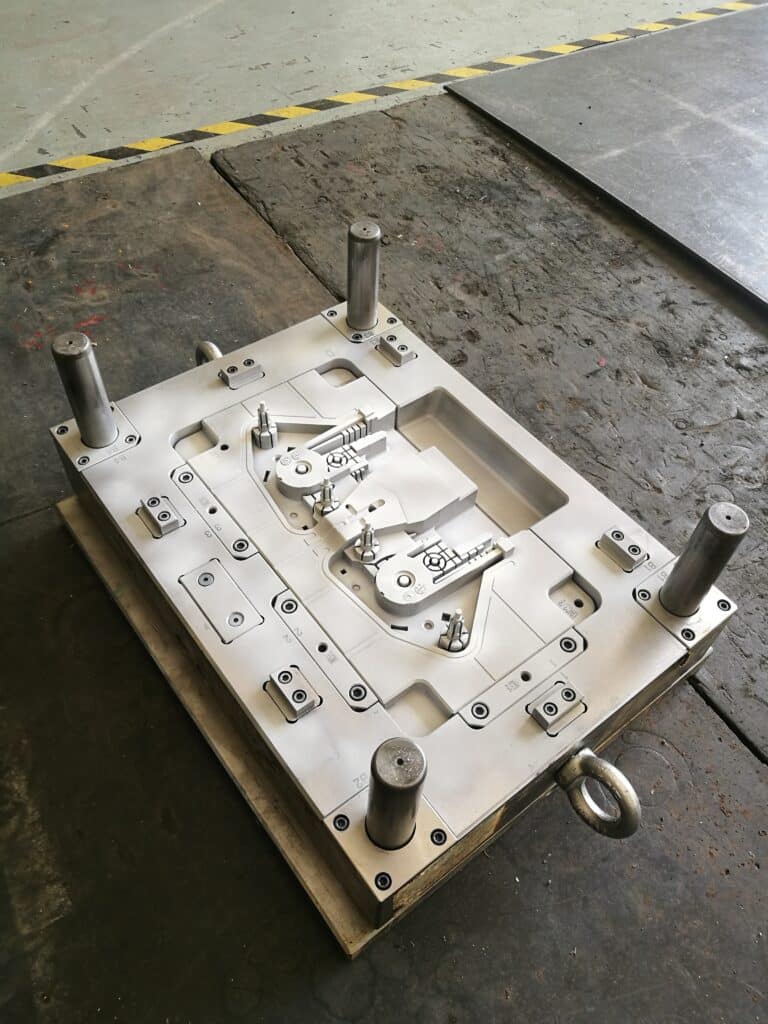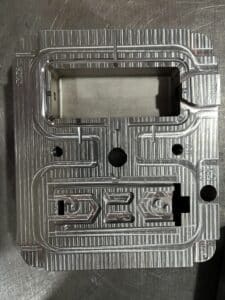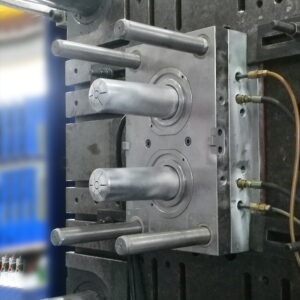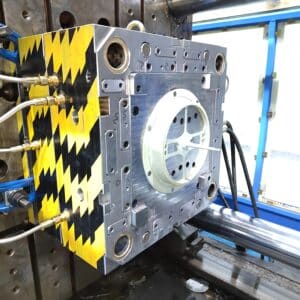Common problems to pay attention to when designing injection mold
1、 Opening direction and parting line
The opening direction and parting line of each injection molding product must be determined at the beginning of design to ensure that the core pulling slider mechanism is reduced as much as possible and the influence of parting line on the appearance is eliminated.
1. After the mold opening direction is determined, the stiffeners, buckles, bulges and other structures of the product shall be designed to be consistent with the mold opening direction as much as possible to avoid core pulling, reduce the seam line and extend the life of the mold.
2. After the mold opening direction is determined, an appropriate parting line can be selected to avoid undercutting in the mold opening direction, so as to improve the appearance and performance.
2、 Demoulding angle
1. Proper demoulding slope can avoid product galling (scuffing). The demoulding slope of smooth surface shall be ≥ 0.5 degree, the surface with fine grain (sand surface) shall be greater than 1 degree, and the surface with coarse grain shall be greater than 1.5 degree.
2. Proper demoulding slope can avoid product top damage, such as top white, top deformation and top breakage.
3. During the design of products with deep cavity structure, the slope of the outer surface shall be greater than the slope of the inner surface as much as possible to ensure that the mold core does not deflect during injection molding, to obtain uniform product wall thickness, and to ensure the material strength of the product opening.
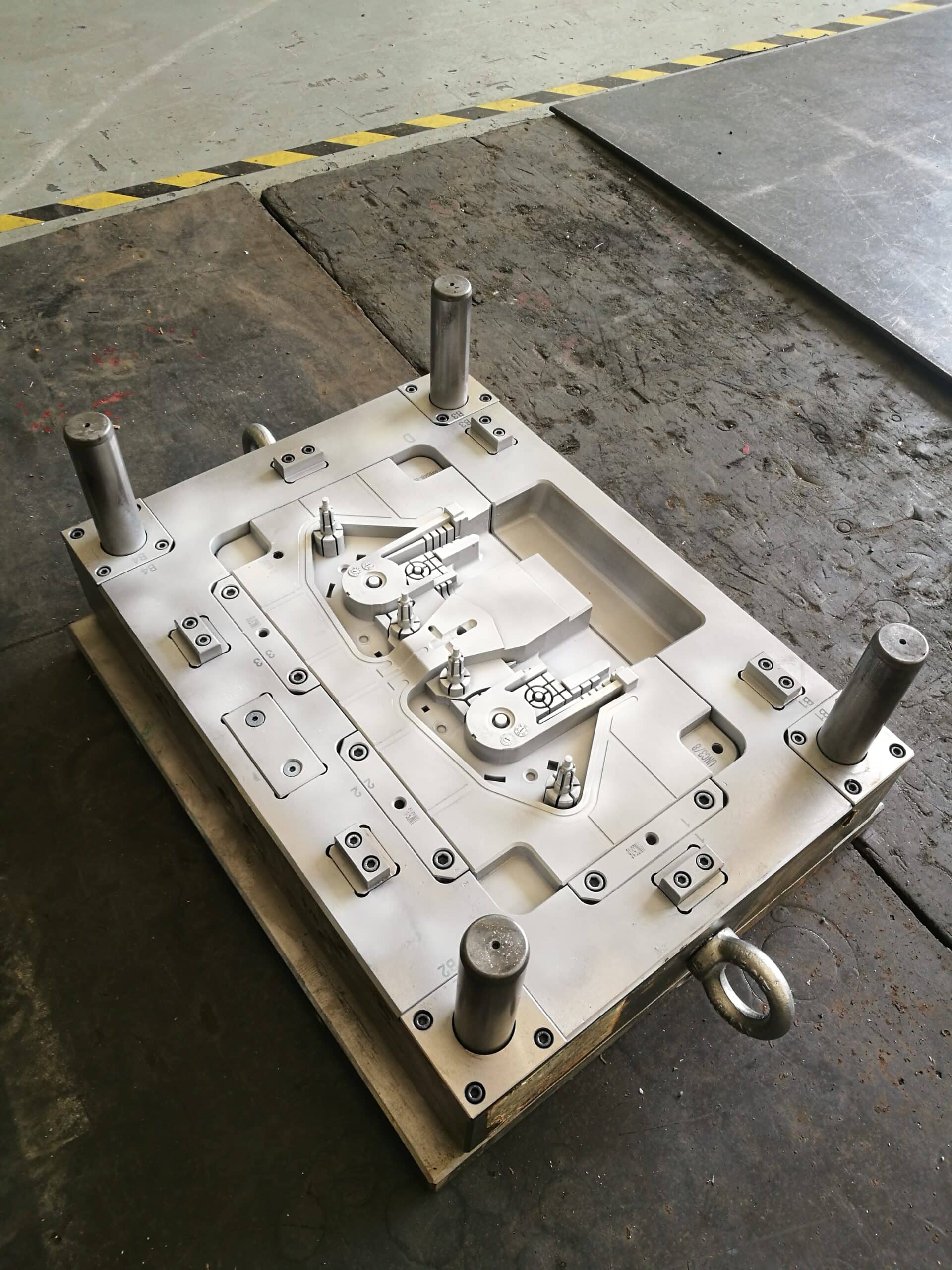
Brass Insert Molding for Auto Parts
3、 Product wall thickness
1. All kinds of plastics have a certain wall thickness range, generally 0.5~4mm. When the wall thickness exceeds 4mm, it will cause problems such as too long cooling time and shrinkage printing. Therefore, it is necessary to consider changing the product structure.
2. Uneven wall thickness will cause surface shrinkage.
3. Uneven wall thickness will cause pores and weld lines.
4、 Stiffener
1. The reasonable application of stiffeners can increase the rigidity of products and reduce deformation.
2. The thickness of the stiffener must be ≤ (0.5 ~ 0.7) T product wall thickness, otherwise the surface will shrink.
3. The single side slope of the stiffener shall be greater than 1.5 ° to avoid jacking injury.
5、 Fillet
1. Too small fillet may cause product stress concentration and lead to product cracking.
2. Too small fillet may cause stress concentration in the mold cavity, leading to cavity cracking.
3. Setting reasonable fillets can also improve the processing technology of the mold. For example, the cavity can be directly milled with the R cutter to avoid inefficient electrical machining.
4. Different fillets may cause movement of parting line, so different fillets or corner cleaning shall be selected according to actual conditions.
6、 Hole
1. The shape of the hole should be as simple as possible, generally round.
2. The axial direction of the hole is consistent with the mold opening direction, which can avoid core pulling.
3. When the length diameter ratio of the hole is greater than 2, the demoulding angle shall be set. At this time, the diameter of the hole shall be calculated according to the minor diameter (maximum material size).
4. The length diameter ratio of blind hole is generally not more than 4. Punching bending of anti hole needle
5. The distance between the hole and the product edge is generally greater than the hole size.
7、 Core pulling and slider mechanism of injection mould and its avoidance
1. When the plastic parts cannot be demoulded smoothly according to the opening direction, the core pulling slider mechanism shall be designed. Sliding block of core pulling mechanism can form complex product structure, but it is easy to cause defects such as product seam line, shrinkage, etc., and increase mold cost and shorten mold life.
2. When designing injection molding products, if there are no special requirements, try to avoid core pulling structure. For example, the direction of the hole axis and the rib is changed to the mold opening direction, and the method of cavity core penetration is used.
8、 Integrated hinge
1. With the toughness of PP material, the hinge can be designed to integrate with the product.
2. The size of the film used as the hinge shall be less than 0.5mm and kept uniform,
3. When the integrated hinge is injected, the gate can only be designed on one side of the hinge.
9、 Insert
1. Inserting inserts in injection molded products can increase local strength, hardness, dimensional accuracy and set small threaded holes (shafts) to meet various special needs. At the same time, it will increase the product cost.
2. The embedded parts are generally copper, or other metal or plastic parts.
3. The part of the insert embedded in the plastic shall be designed with anti rotation and anti pull-out structure. Such as knurling, hole, bending, flattening, shaft shoulder, etc.
4. The plastic around the insert shall be thickened appropriately to prevent stress cracking of the plastic part.
5. When designing the insert, its positioning mode in the mold (hole, pin, magnetic) shall be fully considered
10、 Identification
The product identification is generally set at the flat part of the internal surface of the product, and the convex form is adopted. The identification is set at the surface where the normal direction may be consistent with the mold opening direction ruler to avoid strain.
11、 Precision of injection molded parts
Due to the non-uniformity and uncertainty of shrinkage during injection molding, the precision of injection molded parts is obviously lower than that of metal parts. It is impossible to simply apply the dimensional tolerance of mechanical parts. Appropriate tolerance requirements should be selected according to standards China also issued GB/T14486-93 Dimensional Tolerances for Engineering Plastics Moulding Plastic Parts in 1993. Designers can determine the dimensional tolerances of the parts according to the plastic raw materials used and the requirements for the use of the parts, as well as the provisions in the standard. At the same time, the appropriate design tolerance accuracy shall be determined according to the comprehensive strength of the factory and the design accuracy of the products of the same industry.
12、 Deformation of injection molded parts
Improve the rigidity of injection molding product structure and reduce deformation. The flat structure shall be avoided as far as possible, and the flanging and concave convex structure shall be set reasonably. Set reasonable stiffeners.
13、 Buckle
1. The buckle device is designed to be shared by multiple buckles at the same time, so that the overall device will not be unable to operate due to the damage of individual buckles, thus increasing its service life. In addition, more filters and fillets are added to increase the strength.
2. The tolerance requirements for the relevant dimensions of the buckle position are very strict, and excessive backoff positions are easy to cause buckle position damage; On the contrary, if the backoff position is too small, the assembly position is difficult to control or the combination part is too loose. The solution is to reserve the way that mold modification is easy to add glue.
14、 Welding (hot plate welding, ultrasonic welding, vibration welding)
1. Welding can improve the connection strength.
2. Welding can simplify product design.
15、 Reasonably consider the contradiction between process and product performance
1 The contradiction between product appearance, performance and process must be comprehensively considered when designing injection molded products. Sometimes, good appearance or performance can be obtained at the expense of some processability.
2. If the structural design is unable to avoid the injection molding defects, the defects should be located in the hidden parts of the product as much as possible.
16、 The relationship between the diameter of screw column and the diameter of self tapping screw
Hole diameter of self tapping screw column
M2 1.7mm
M2.3 2.0mm
M2.6 2.2mm
M3 2.5mm
17、 Design principles of BOSS:
1. The prop shall not be used alone as far as possible, but shall be connected to the outer wall or used together with the reinforcing rib as far as possible, so as to strengthen the strength of the prop and make the rubber flow more smoothly.
2. The height of the column is generally not more than two and a half times the diameter of the column. The high support will lead to air trapping during the molding of plastic parts (if the length is too long, it will cause air holes, scorching, insufficient filling, etc.).
3. If the column height exceeds two and a half times of the column diameter, especially the column far away from the outer wall, the method of strengthening the column strength is to use stiffeners
4. The shape of BOSS is mainly round, while other shapes are difficult to process
5. The position of the BOSS should not be too close to the corner or the outer wall, and should be kept a distance from the outer wall of the product
6. Remove part of the flesh thickness around the BOSS (that is, open the crater) to prevent shrinkage and subsidence
7. BOSS die setting angle: usually 0.5 ° outside, 0.5 ° or 1 inside


